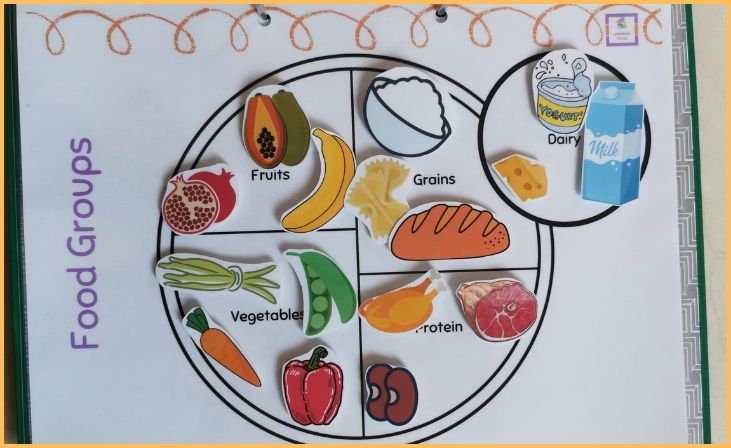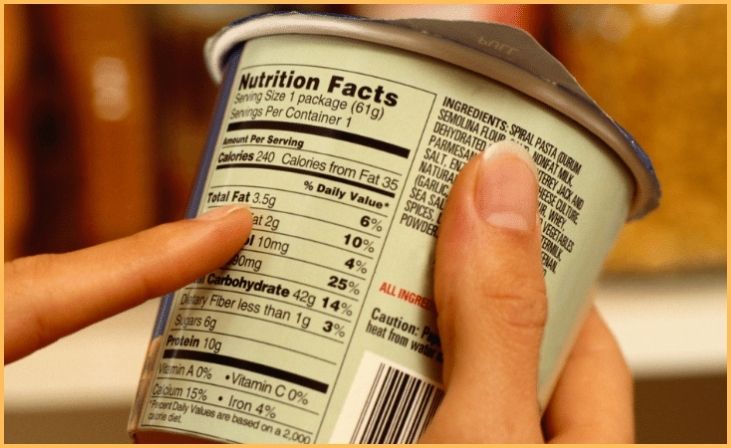Discover 7 easy ways to teach kids about nutrition and healthy food choices in this informative blog post. Teaching children about nutrition early on is essential for instilling healthy habits and promoting a balanced lifestyle. From incorporating nutrition education into games and classrooms to starting conversations about healthy food choices, these methods make learning about nutrition fun and engaging for kids.
The post also includes practical tips, such as growing a garden together and reading children’s books that teach about nutrition, to help parents and educators effectively teach kids about the importance of healthy eating. Learn how to incorporate educational games, colorful charts, and hands-on activities to empower kids with the knowledge they need to make nutritious decisions that will benefit them throughout their lives.
Whether you’re a parent, teacher, or caregiver, these easy and creative approaches will help children develop a positive relationship with food and make informed choices for their well-being.
Easily Teach Kids About Nutrition and Healthy Food
Children are like sponges, eager to absorb knowledge and experiences. When it comes to nutrition, instilling healthy habits early can set the foundation for a lifetime of well-being. Here are seven easy and enjoyable ways to teach kids about nutrition and guide them toward making healthy food choices:
Quick Read: 7 Healthy Kids’ Lunchbox Ideas: Fueling Your Child’s Day with Delicious Nutrition
1. Interactive Cooking Sessions
Transform your kitchen into an interactive classroom by involving kids in age-appropriate cooking activities. These hands-on sessions serve as a dynamic platform to teach children about essential nutrition concepts, including the significance of diverse food groups and appropriate portion sizes. Through engaging cooking experiences, kids not only develop practical culinary skills but also gain valuable knowledge about incorporating colorful fruits and vegetables into their meals. The kitchen becomes a space where learning is tactile and memorable, fostering a positive relationship with food that extends beyond the dining table.
By making nutrition education an interactive adventure, you create lasting memories while instilling a foundation of healthy habits that will benefit them throughout their lives. Embrace the joy of learning through cooking, transforming the kitchen into a lively educational space that empowers children to make informed and nutritious choices.
2. Educational Games

Infuse the joy of learning into nutrition education by incorporating entertaining games and activities. Whether it’s board games, puzzles, or interactive online resources, these engaging tools provide a playful avenue for children to grasp essential concepts of healthy eating. By turning lessons into games, you not only capture their attention but also transform the sometimes complex principles of nutrition into an enjoyable experience. The interactive nature of these activities makes learning about food groups, balanced meals, and the benefits of a rainbow-colored plate both accessible and fun.
These educational games not only stimulate young minds but also instill a lasting understanding of the importance of making nutritious choices. Embrace the power of play in nutrition education, creating an environment where children learn to associate healthy habits with excitement and curiosity.
3. Grocery Shopping Adventure
Embark on a vibrant grocery shopping adventure with kids, involving them in the selection of fresh produce, whole grains, and lean proteins. This interactive process transforms the grocery store into an exciting learning environment, providing an opportunity to discuss the myriad benefits of each food item. Engaging children in the decision-making process empowers them to make informed choices, fostering a sense of responsibility for their nutritional well-being. As they explore the aisles, conversations about the importance of a colorful plate and the role each food group plays in their health become natural and enjoyable.
This hands-on approach not only enriches their understanding of nutritious foods but also cultivates a positive relationship with grocery shopping as a fun and educational experience. Embrace the grocery store as a classroom, where children discover the value of wholesome foods and gain skills that contribute to a lifetime of healthy choices.
4. Create a Rainbow Plate

Introduce the concept of a balanced meal to children by crafting a vibrant “rainbow plate.” Encourage them to incorporate a diverse array of colorful fruits and vegetables onto their plate, each hue representing distinct nutrients and health benefits. This visual and hands-on approach transforms the abstract idea of balanced nutrition into a tangible and exciting concept for young minds. As kids arrange their plates with a spectrum of colors, they not only engage in a creative activity but also gain a practical understanding of the importance of variety in their diet.
This interactive learning experience makes the journey to a balanced meal both enjoyable and educational, setting the foundation for a lifetime of nutritious eating habits. Embrace the vibrant world of a “rainbow plate” to make the principles of balanced nutrition come alive, fostering enthusiasm for wholesome and colorful foods among children.
5. Storytelling with Food
Unleash the magic of storytelling to convey the significance of healthy eating to children. Craft entertaining and imaginative tales that narrate the adventures of various foods, highlighting their roles in supporting growth, energy, and overall well-being. Through storytelling, knowledge is not just imparted but comes alive with vivid characters and plots, sparking curiosity and fostering interest in making nutritious choices. These imaginative narratives transform nutritional education into a captivating journey, making the principles of healthy eating accessible and engaging for young minds.
As children immerse themselves in these food-centric adventures, they not only absorb valuable information but also develop a positive association with making nutritious choices. Embrace the power of storytelling as a delightful tool to nurture a lifelong appreciation for healthy eating habits in children.
6. Food Label Exploration

Empower kids with essential nutritional knowledge by teaching them how to decipher food labels. Engage in conversations about terms like calories, serving size, and the significance of limiting added sugars and unhealthy fats in their diet. Transforming the exploration of food labels into a game adds an element of fun, demystifying the information and making it more accessible for children. By turning this educational process into an interactive and enjoyable experience, kids not only learn to navigate nutritional information but also feel empowered to make informed decisions when selecting snacks and meals.
This practical skill equips them with the tools needed for a lifetime of health-conscious choices. Embrace the educational power of food labels, turning label-reading into an exciting game that cultivates awareness and encourages a thoughtful approach to nutrition in children.
Read More: The Top 7 Things to Do in Cabo with Kids
7. Family Mealtime Discussions
Transform mealtime into an enriching learning experience by discussing the nutritional aspects of the food on the table. Share intriguing facts about different foods, their origins, and the wealth of nutritional benefits they offer. Creating an open and informative dialogue during meals fosters a positive attitude toward food and nutrition, reinforcing healthy habits in a natural and enjoyable way.
As you engage in these conversations, you not only impart valuable knowledge but also cultivate a deeper appreciation for the nourishing properties of various foods. This interactive approach helps children connect with their meals, fostering a mindful and informed relationship with what they eat. Embrace the opportunity to make mealtime more than just nourishment by turning it into a dynamic learning environment that nurtures healthy attitudes toward food in a fun and natural way.
Final Words
In conclusion, teaching kids about nutrition and healthy food choices is crucial for their overall well-being and sets the foundation for a lifetime of healthy habits. By incorporating fun and interactive methods, such as games, hands-on activities, and reading children’s books, children can learn about nutrition in an engaging way. Growing a garden together provides a hands-on experience that teaches children about where their food comes from and encourages them to make healthier choices.
Additionally, involving children in meal planning and preparation can foster a sense of ownership and excitement about nutritious meals. By starting conversations about healthy food choices and using resources like food labels and nutrition facts, children can develop the skills to make informed decisions about their diet.
These easy and practical approaches to teaching kids about nutrition empower them to prioritize their health and well-being from an early age, setting them up for a lifetime of healthy eating habits.
FAQs
Integrate interactive activities like cooking together, creating colorful food charts, or playing nutrition-focused games to make the learning process enjoyable and memorable.
Provide snacks like fresh fruits, vegetable sticks with hummus, yogurt with berries, or whole-grain crackers with cheese to offer a balance of nutrients while satisfying their taste buds.
Involve them in the kitchen, allowing them to choose ingredients for meals or participate in simple food preparations. Exposure to a variety of foods in a positive environment often leads to increased willingness to try new things.
Yes, various age-appropriate books, videos, and online resources are available to make learning about nutrition engaging for children. These resources often use colorful visuals and interactive content to make the information accessible and entertaining.







